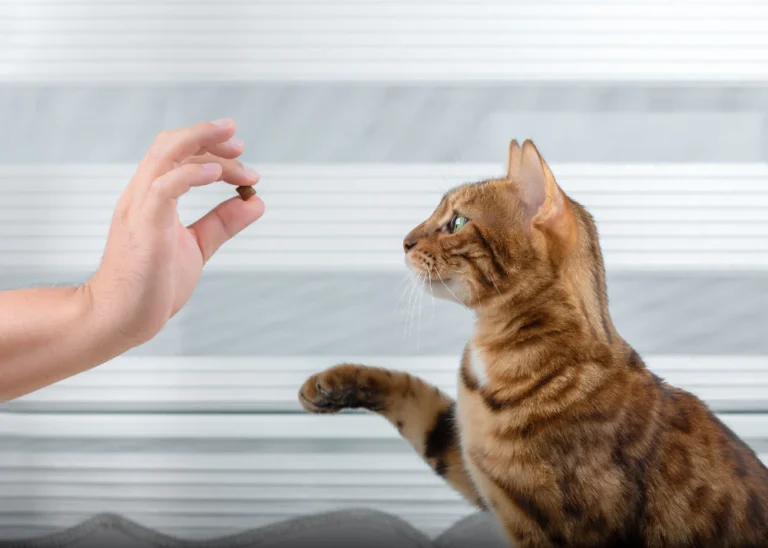Cat health concerns
Common Ailments in Feline Health
Feline health encompasses a wide range of ailments that commonly affect our beloved furry friends. One prevalent issue is obesity, which can lead to serious health complications such as diabetes, joint problems, and heart disease. To prevent obesity in cats, it is crucial to provide a balanced and nutritious diet, as well as engage in regular exercise activities. Monitoring portion sizes and avoiding overfeeding is also essential in maintaining a healthy weight in felines.
Another common ailment in feline health is dental disease. Just like humans, cats can suffer from plaque buildup, gum inflammation, and tooth decay. Poor oral hygiene can put your cat at risk of developing painful dental infections and difficulty in eating. Regular tooth brushing, using cat-friendly toothpaste, and offering dental treats can help prevent dental issues. Additionally, annual dental check-ups and professional cleanings by a veterinarian are crucial to maintaining optimal dental health in felines.
Understanding Digestive Issues in Cats
The digestive system of cats is a complex and important part of their overall health. Just like humans, cats can experience various digestive issues that can result in discomfort and other health problems. One common digestive issue in cats is vomiting. Cats may vomit due to anything from eating too quickly or ingesting something indigestible to more serious underlying conditions such as gastrointestinal inflammation or infections. If your cat is vomiting frequently or if you notice any blood in the vomit, it is essential to seek veterinary attention promptly.
Another common digestive issue in cats is diarrhea. Diarrhea can be the result of various factors, including dietary changes, food intolerances or allergies, infections, and parasitic infestations. It is crucial to monitor your cat’s bowel movements and consult with a veterinarian if diarrhea persists for more than a day or is accompanied by other concerning symptoms such as lethargy or loss of appetite. In some cases, a change in diet or medication may be necessary to address the underlying digestive issue and restore your furry friend’s digestive health.
Respiratory Problems in Felines: Causes and Treatments
When it comes to respiratory problems in cats, there can be a variety of causes that contribute to these issues. One common culprit is viral infections, such as feline herpesvirus or feline calicivirus. These viruses can cause upper respiratory symptoms, including sneezing, nasal discharge, and congestion. Another cause of respiratory problems in felines is bacterial infections, often resulting from secondary infections following a viral illness. These infections can affect the lungs and airways, leading to coughing, difficulty breathing, and wheezing.
In addition to infections, other factors can also contribute to respiratory problems in cats. Environmental factors, such as exposure to smoke, dust, or allergens, can irritate the airways and lead to respiratory symptoms. Similarly, exposure to chemicals, such as cleaning products or aerosol sprays, can also have a negative impact on a cat’s respiratory health. It’s important to be mindful of these potential triggers and take steps to minimize exposure to them. Fortunately, there are treatments available for respiratory problems in felines. Depending on the cause of the issue, veterinarians may prescribe antiviral or antibiotic medications to address infections. Additionally, supportive treatments, such as nasal decongestants or humidifiers, can help relieve symptoms and improve a cat’s respiratory health. Regular veterinary check-ups and a healthy lifestyle can also play a crucial role in preventing and managing respiratory problems in our feline companions.
Uncovering Skin Conditions and Allergies in Cats
Skin conditions and allergies are quite common in cats and can cause a great deal of discomfort for our furry friends. One of the most common skin conditions in cats is dermatitis, which is characterized by inflammation and itching of the skin. This can be caused by a variety of factors, including fleas, mites, allergies, or even exposure to certain chemicals. Cats with dermatitis often show signs of excessive scratching, hair loss, and redness or sores on their skin.
Allergies in cats can also manifest as skin conditions, and they can be triggered by a number of different substances. These may include certain foods, environmental allergens like pollen or dust mites, or even materials like certain fabrics or cleaning products. When a cat has an allergic reaction, their immune system is hypersensitive to these substances, and it releases histamines that cause itching, redness, and inflammation. It’s important to identify the specific allergen causing the reaction in order to effectively manage the condition and provide relief to our feline companions.
Dental Health: Preventing Oral Diseases in Cats
Proper dental care is essential for ensuring the overall health and well-being of our feline friends. Unfortunately, oral diseases are quite common in cats, making it crucial for pet owners to take preventative measures. One of the most effective ways to prevent oral diseases in cats is through regular brushing. Just like humans, cats need their teeth cleaned to remove plaque and prevent the buildup of tartar. Using a soft-bristled toothbrush and cat-friendly toothpaste, gently brush your cat’s teeth a few times a week. This simple routine can significantly reduce the chances of dental issues and keep your cat’s mouth healthy.
In addition to brushing, providing your cat with appropriate chew toys can also contribute to good dental health. Chew toys help to stimulate saliva production, which can naturally cleanse the teeth and gums. Opt for toys that are specifically designed to promote dental health, such as those with textured surfaces or bristles. Make sure to choose toys that are safe and durable, as cats can be quite vigorous when playing and chewing. By encouraging your cat to chew on appropriate toys, you can help maintain their oral hygiene and prevent oral diseases.
Addressing Behavioral Concerns in Feline Health
Behavioral issues can be a significant concern in feline health, causing distress for both the cat and their human companions. One commonly seen behavioral problem in cats is inappropriate urination, where a cat may urinate outside of their litter box. This can be a frustrating behavior for owners, but it is important to approach it with patience and understanding.
There are several potential reasons behind inappropriate urination in cats. It may be due to a medical condition such as a urinary tract infection or bladder stones. Stress or anxiety can also play a role, particularly in multi-cat households or when there are changes in the cat’s environment. Additionally, certain litter box preferences or aversions can contribute to this behavior. To address this issue, it is crucial to first rule out any underlying medical problems by consulting with a veterinarian. Once medical causes are excluded, environmental modifications, litter box adjustments, and behavior modification techniques can be implemented to help resolve this problem.
Recognizing and Managing Urinary Tract Issues in Cats
Urinary tract issues can be quite common in cats and can cause significant discomfort and health problems if left untreated. One of the most common signs of urinary tract problems in cats is frequent urination or difficulty urinating. If you notice your cat straining in the litter box or producing only small amounts of urine, it may be a clear indication of a urinary issue. In addition, cats with urinary tract problems may exhibit signs of pain or discomfort while urinating, such as vocalizing or licking their genital area excessively.
Managing urinary tract issues in cats can be challenging, but early detection and proper treatment are crucial for the well-being of your feline friend. In cases of urinary tract infections, antibiotics are often prescribed to eliminate the bacteria causing the infection. Additionally, your veterinarian may recommend dietary changes, such as feeding canned food instead of dry kibble, to increase your cat’s water intake and maintain a healthy urinary system. In more severe cases, surgical intervention or the use of medications to dissolve urinary crystals or stones may be necessary. Regular check-ups with your veterinarian and providing your cat with a clean litter box and plenty of fresh water are essential in preventing and managing urinary tract issues in cats.
Navigating Reproductive Health Concerns in Felines
Breeding and reproduction are natural instincts in felines, but it is crucial for cat owners to navigate reproductive health concerns to ensure the well-being of their pets. Managing reproduction in cats involves a careful understanding of their reproductive cycle and the potential complications that may arise.
One common reproductive concern is the presence of reproductive health disorders in female cats. These may include conditions such as ovarian cysts, uterine infections, or hormonal imbalances, which can lead to complications during pregnancy or difficulties in delivering kittens. Regular veterinary check-ups and monitoring the reproductive health of female cats can help detect and address these issues in a timely manner. Additionally, responsible cat owners should consider spaying their female cats if they do not plan to breed them, as this reduces the risk of reproductive health problems and prevents unwanted litters.
What are some common reproductive health concerns in felines?
Some common reproductive health concerns in felines include pyometra (infection of the uterus), mammary gland tumors, testicular tumors, and reproductive tract infections.
How can I prevent reproductive health issues in my cat?
The best way to prevent reproductive health issues in cats is to have them spayed or neutered. This eliminates the risk of certain diseases and can also help prevent behavioral problems.
At what age should I consider spaying or neutering my cat?
It is generally recommended to spay or neuter cats between 4 to 6 months of age. However, you should consult with your veterinarian to determine the best timing for your individual cat.
Are there any risks associated with spaying or neutering?
Like any surgical procedure, there are risks associated with spaying or neutering. However, these risks are generally low, and the benefits of the procedure outweigh the potential risks.
How long is the recovery period after spaying or neutering?
The recovery period after spaying or neutering can vary, but it typically takes about 7 to 10 days for cats to fully recover. Your veterinarian will provide specific instructions for post-operative care.
Can cats still reproduce after being spayed or neutered?
No, spaying or neutering cats prevents them from reproducing. These procedures involve the removal of reproductive organs, eliminating the ability to reproduce.
Are there any behavioral changes that can occur after spaying or neutering?
Spaying or neutering can lead to behavioral changes in cats. They may become calmer, less prone to aggression, and less likely to roam. However, each cat is different, and not all behavioral changes may be observed.
What should I do if I suspect my cat has a reproductive health issue?
If you suspect your cat has a reproductive health issue, it is important to consult with your veterinarian. They can perform a thorough examination and recommend appropriate diagnostic tests or treatments.
Can reproductive health issues in cats be hereditary?
Some reproductive health issues in cats can have a hereditary component. It is important to obtain cats from reputable breeders who prioritize the health of their breeding cats and perform appropriate health screenings.
Are there any specific care instructions for cats recovering from reproductive health issues?
The care instructions for cats recovering from reproductive health issues will vary depending on the specific issue. Your veterinarian will provide you with detailed instructions on post-treatment care, including medications, dietary restrictions, and activity limitations.







